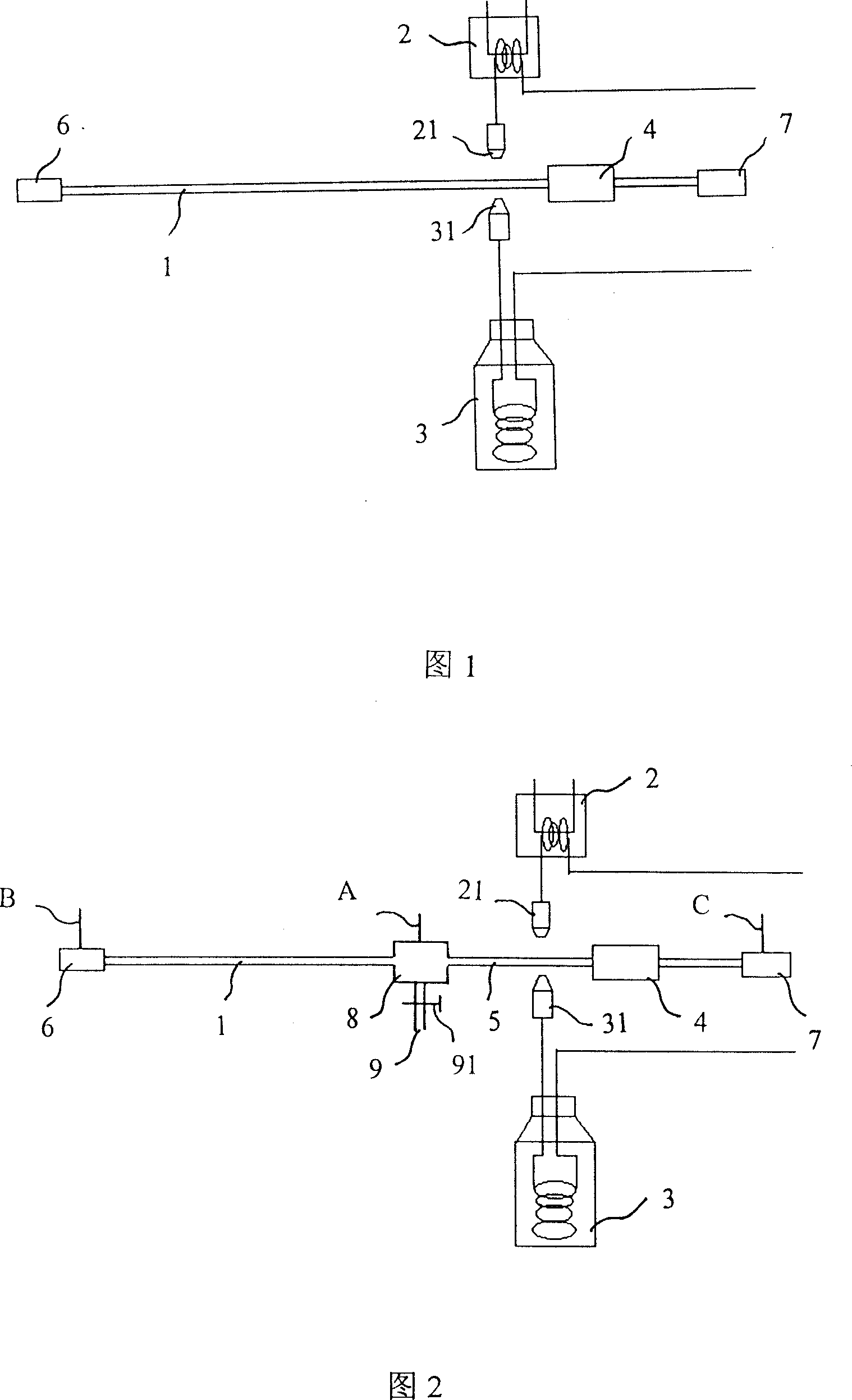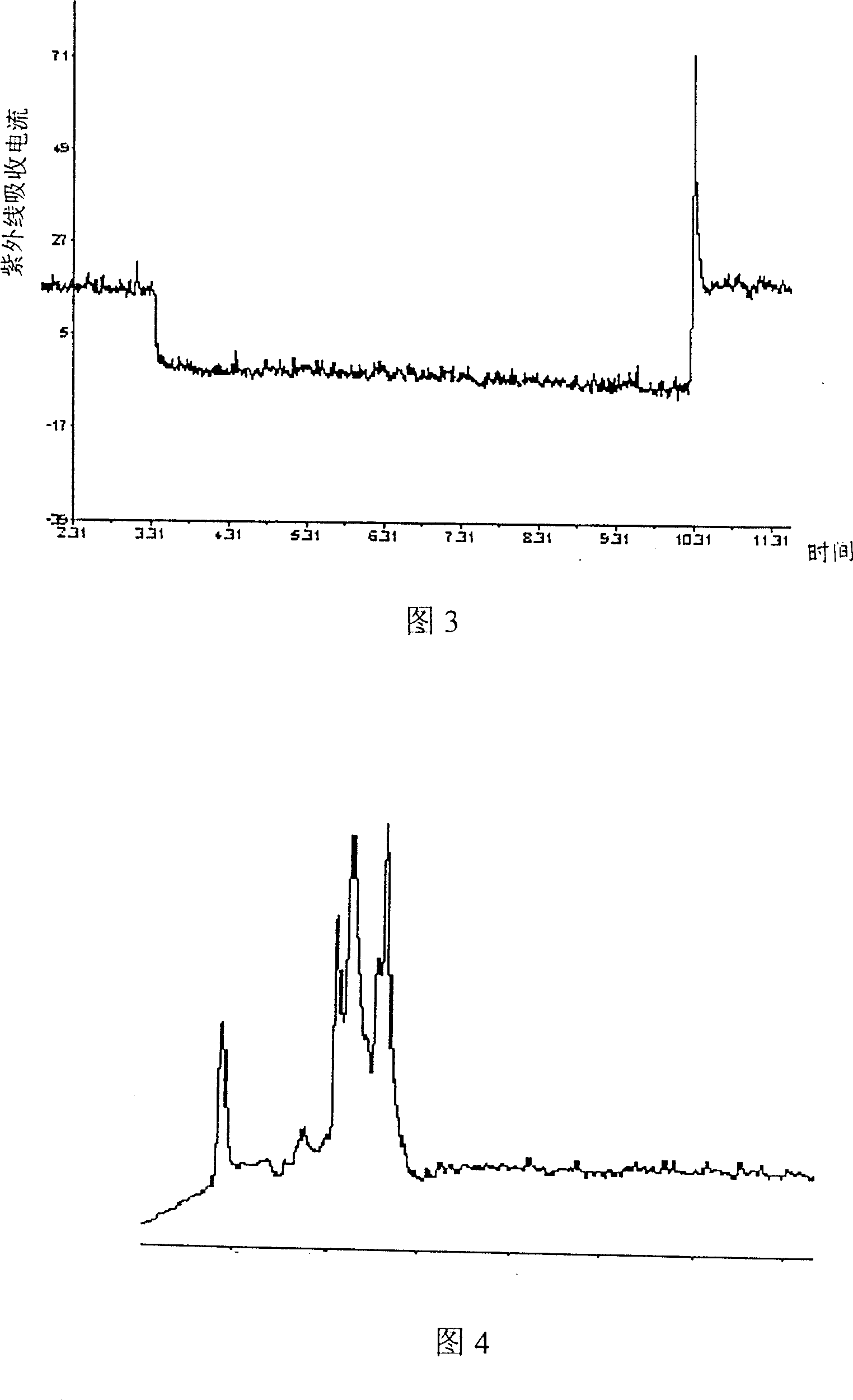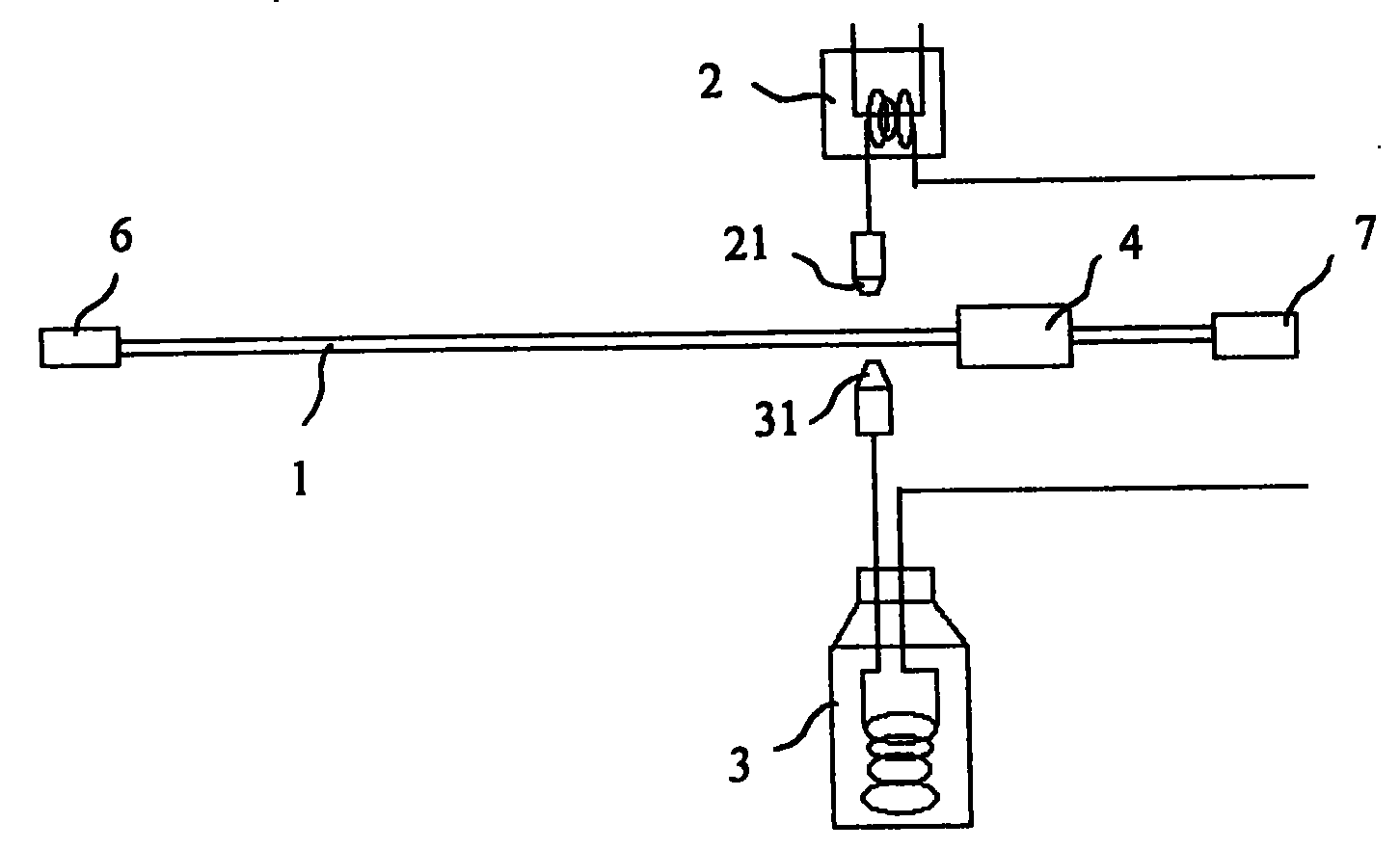Method and apparatus for controlling electrovadose in capillary isoelectrofocusing electrophoresis
An isoelectric focusing electrophoresis and capillary technology, which can be applied to measurement devices, separation methods, chemical instruments and methods, etc., can solve the problems of flow pattern change and separation effect deterioration, and achieve no change in flow pattern, improve focusing effect, separation good effect
- Summary
- Abstract
- Description
- Claims
- Application Information
AI Technical Summary
Problems solved by technology
Method used
Image
Examples
Embodiment 1
[0035] Referring to Figure 1, the present invention provides a device for controlling electroosmotic flow in capillary isoelectric focusing electrophoresis, which is composed of a capillary separation column 1, a heating device 2, a freezing device 3, a detector 4 and a power supply. The front end of the capillary separation column 1 is The sample inlet 6, the rear end is the sample outlet 7, and are respectively connected to the power supply (not shown in the figure). The front ends of the heating device 2 and the freezing device 3 are respectively provided with gas injection holes 21 and 31, and are arranged in the capillary separation On both sides of the appropriate position of the column 1, that is, one end of the sample outlet 7 of the capillary separation column, the detector 4 is installed on the capillary separation column 1 between the heating device 2 and the sample outlet 7.
[0036] According to the principle that the fluid will condense into a solid at low temperatur...
Embodiment 2
[0042] Please refer to Figure 2. The present invention provides another device for controlling electroosmotic flow in capillary isoelectric focusing electrophoresis. It consists of two capillary separation columns 1 and 5, a heating device 2, a freezing device 3, a detector 4 and a power supply (not shown in the figure). Given) composition, the front end of the capillary separation column 1 is the injection port 6, the back end is connected to the interface 8, and the interface 8 is connected to the power supply, the flow path 9 and the capillary column 5 at the same time, and the end of the capillary column 5 is the sample outlet 7. Electrodes B and C are inserted into the sample inlet 6 and the sample outlet 7 respectively. Electrode A is inserted at the upper end of the interface 8, and its lower end is a flow path 9 with a shut-off valve 91, which is used to empty part of the fluid in the tube, and can also be used for the separation of multi-dimensional isoelectric focusing; ...
Embodiment 3
[0045] Example 3: Electro-osmotic flow changes
[0046] Experimental conditions: (using the separation device described in Example 1)
[0047] Capillary (Hebei Yongnian Ruiyang Chromatography Device Co., Ltd., inner diameter: 75μm, outer diameter: 375μm), the inner surface is inertly treated; carrier ampholyte Pharmalyte (pH3.0-5.0), N, N, N′, N′-tetramethylethylenediamine (TEMED, 99%). TriSep of Unitech TM -2000GV type capillary electrophoresis instrument, including a tunable wavelength ultraviolet-visible detector, a continuously adjustable high-voltage DC power supply.
[0048] Working voltage: 5kv
[0049] Liquid nitrogen freezing: freezing time 2s
[0050] Hot air heating: heating time 2s
[0051] Referring to Figure 3, it can be seen that the electroosmotic flow remains at a stable value during the freezing process, and after heating, the electroosmotic flow returns to the initial state.
PUM
 Login to View More
Login to View More Abstract
Description
Claims
Application Information
 Login to View More
Login to View More - R&D
- Intellectual Property
- Life Sciences
- Materials
- Tech Scout
- Unparalleled Data Quality
- Higher Quality Content
- 60% Fewer Hallucinations
Browse by: Latest US Patents, China's latest patents, Technical Efficacy Thesaurus, Application Domain, Technology Topic, Popular Technical Reports.
© 2025 PatSnap. All rights reserved.Legal|Privacy policy|Modern Slavery Act Transparency Statement|Sitemap|About US| Contact US: help@patsnap.com



